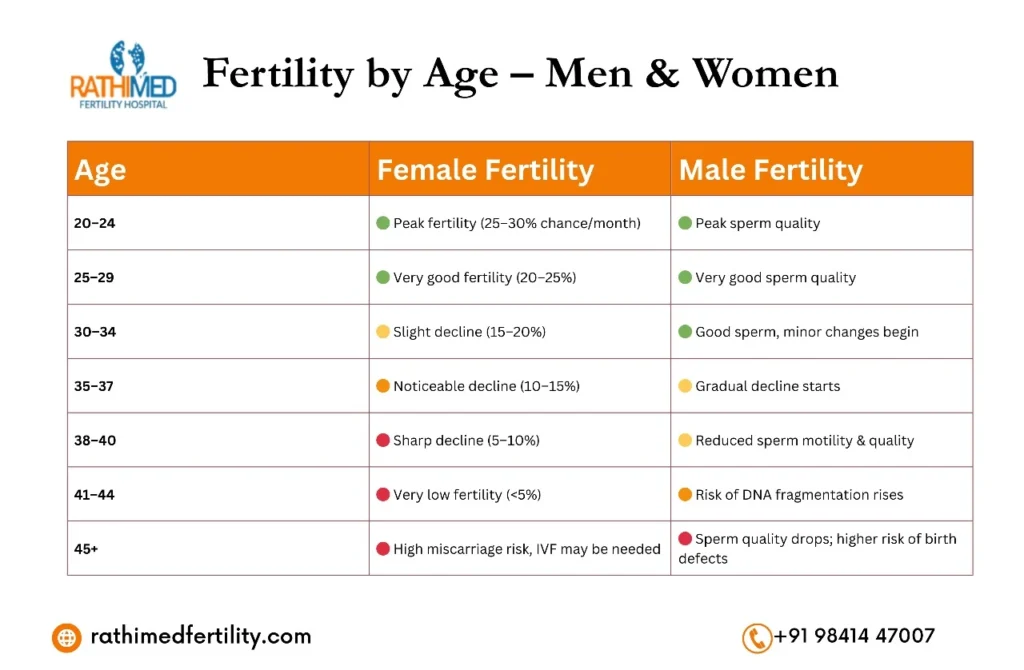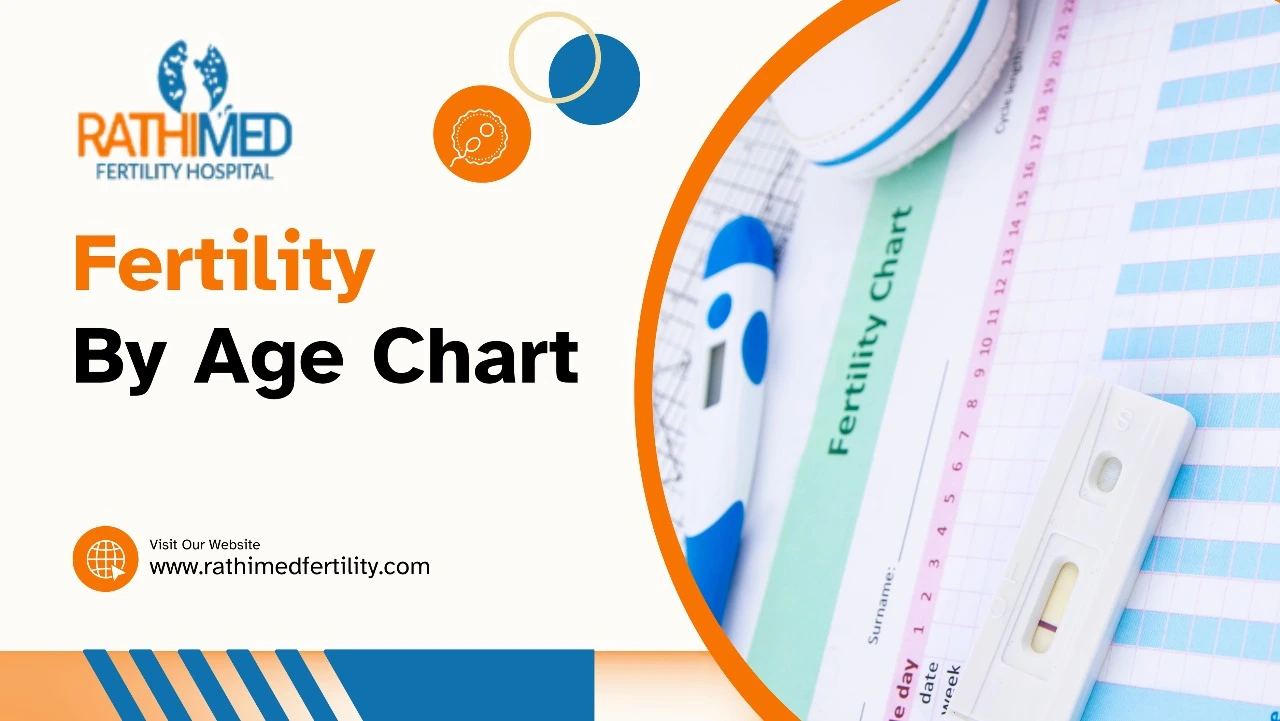Parenthood is a beautiful journey, but for many couples, understanding the right time to start a family is crucial. At Rathimed Fertility Centre, we believe in empowering couples with accurate information so they can make informed decisions. One of the most important tools for this is the fertility by age chart, which helps women understand how age can impact their chances of conceiving naturally.
In this blog, we explore how female fertility by age changes, the science behind the numbers, and how Rathimed can support your parenthood journey every step of the way.

Why Age Matters in Female Fertility
Biologically, women are born with all the eggs they will ever have — approximately one to two million at birth. Over time, both the fertility rate by age and the quality of eggs decline, especially after the age of 30. While many women successfully conceive in their late 30s or early 40s, it’s essential to understand how age plays a critical role in fertility outcomes.
This is where the fertility by age chart becomes an important reference. It provides a visual representation of the average fertility rates at different ages, allowing couples to better plan their fertility journey.
Fertility by Age Chart – What It Tells You
Below is a simplified version of the fertility by age chart that showcases the general trends in natural conception:
| Age Range | Monthly Natural Conception Rate | IVF Success Rate (approx.) |
| 20–24 | 25–30% | 45–55% |
| 25–29 | 20–25% | 40–50% |
| 30–34 | 15–20% | 35–45% |
| 35–39 | 10–15% | 25–35% |
| 40–44 | 5–10% | 10–20% |
| 45+ | <5% | <5–10% |
The fertility by age chart highlights how conception rates drop with age and how assisted reproductive technologies like IVF also face diminishing success after age 35.
Female Fertility by Age: What Happens Biologically?
- In Your 20s:
This is considered the peak of female fertility by age. Hormone levels are optimal, ovulation is regular, and egg quality is high. This is the best age range in terms of natural conception. - In Your 30s:
Fertility begins to decline slowly after 30 and more sharply after 35. Egg quality starts to deteriorate, and the risk of miscarriage or chromosomal abnormalities increases. - In Your 40s:
The chances of natural conception significantly reduce. By 40, women have fewer eggs, and the ones remaining are often of lower quality. Still, many women do conceive through IVF or with the help of donor eggs.
The fertility rate by age is affected not just by egg count but also by general health, reproductive conditions (like PCOS or endometriosis), and lifestyle factors such as smoking or stress.
Why Use a Fertility by Age Chart?
The fertility by age chart is not meant to create fear but to help women make informed choices. For example, if you’re 32 and not ready for pregnancy yet, you might consider options like egg freezing. If you’re over 35 and trying to conceive, seeing a fertility specialist at Rathimed early can improve your chances of success.
Using the fertility by age chart as a planning tool allows you to:
- Set realistic expectations
- Monitor your reproductive health
- Know when to seek fertility treatment
- Explore preservation methods like egg freezing
How Rathimed Fertility Centre Supports Your Fertility Journey
At Rathimed Fertility Centre, we understand that every fertility story is unique. Our team of fertility specialists offers personalized care based on your age, health profile, and reproductive goals.
We offer:
- Advanced fertility assessments
- Egg reserve testing (AMH levels)
- IVF treatments
- ICSI treatments
- Egg and embryo freezing
- Hormonal therapy and ovulation induction
- Counseling and emotional support
Whether you’re just starting out or considering treatment, our specialists will guide you using evidence-based data and personalized care plans.
Tips to Boost Fertility at Any Age
While age is a key factor, you can support your fertility health with some proactive steps:
- Maintain a healthy weight – Obesity or being underweight can affect ovulation.
- Eat a balanced diet – Nutrients like folate, zinc, and vitamin D support fertility.
- Reduce stress – Chronic stress may interfere with hormone levels.
- Avoid smoking and excessive alcohol – Both lower fertility and egg quality.
- Track ovulation – Knowing your fertile window boosts chances of natural conception.
- Get regular checkups – Early detection of fertility issues is crucial.
Final Thoughts
Fertility is not just about numbers, but knowledge empowers you. Understanding the fertility by age chart and how the fertility rate by age works gives you control over your future. Whether you’re in your 20s and planning ahead or in your 40s seeking assistance, Rathimed Fertility Centre is here to support your journey with science, compassion, and care.
If you’re concerned about female fertility by age or planning for a future pregnancy, don’t wait. Book your consultation with Rathimed Fertility Centre today.
📞 Call us at 9841447007or visit www.rathimedfertility.com to take the first step toward parenthood.
Also Check: Affordable IVF Treatment.

